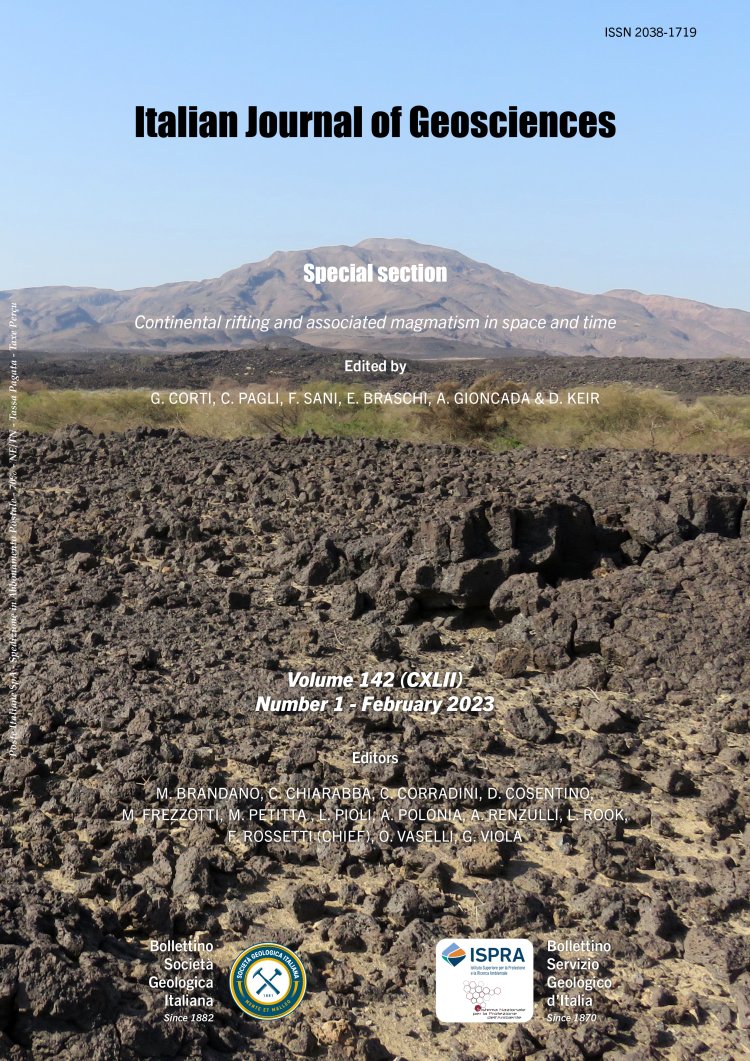
Formation of magmatic segments within the Aluto-Gedemsa area, Main Ethiopian Rift
Wubamlak Nigussie1,2, Abera Alemu1, Ameha A. Muluneh1,3, Kevin Mickus4 & Yoseph Muhabaw1,2
1School of Earth Sciences, Addis Ababa University, Addis Ababa, Ethiopia.
2School of Earth Sciences, Bahir Dar University, Bahir Dar, Ethiopia.
3Helmholtz Centre Potsdam, GFZ German Research Centre for Geosciences, Potsdam, Germany. 4 Department of Geosciences, Missouri State University, Springfield, United States.
Corresponding author e-mail: wubmulnig12@gmail.com
Volume: 142 (2023) f.1
Pages: 28-41
Abstract
The formation of magmatic segments in the Main Ethiopian Rift (MER) is key to the argument that the rift is transitioning from a continental to an oceanic spreading center. In this study, we used gravity data from Global Gravity Model plus2013 to interpret the formation and nature of magmatic segmentation within the Aluto- Gedemsa area, central MER. Our gravity data show that the Aluto and Gedemsa magmatic segments represent two distinct features and no linkage between the two occurs. This observation is in contradiction to surface tectonic mappings, which argue that Aluto and Gedemsa volcanoes belong to a single magmatic segment. Our results suggest that magmatic localization beneath the two segments may not be controlled by the same magmatic process: The Gedemsa magmatic segment (G-MS) is associated with an elongated NW trending gravity maxima, which suggests that its formation could be linked to and controlled by transversal structures in the rift. On the other hand, circular positive gravity maxima characterize the Aluto magmatic segment (AL-MS), suggesting that dyke intrusion controls the formation of the segment. Our results, together with existing data, support the occurrence of bilateral off-rift magmatic extension zones, in addition to the axial magmatic segments (AL-MS and G-MS). These results suggest that the central MER is still in a relatively immature stage of continental rifting where strain is accommodated by border faults, axial magmatic segments, and off-rift magmatic zones.
Keywords
Get Full Text